Today I finished reading ‘A Raw Youth’ by Fyodor Dostoevsky in the two volume Limited Editions Club set, no. 1124 of 2000, translated by Constance Garnett, with an introduction by Konstantin Mochulsky, and illustrated with wood engravings by Fritz Eichenberg, whose signature it bears.
Mochulsky begins his introduction by saying that “Because of its structural flaws, ‘A Raw Youth’ has been dismissed by some critics as an inferior work of Dostoevsky’s”. I agree with his estimate that the work is important for the themes familiar to as today as they were to Mochulsky when this edition was published.
Charles Dickens would have identified with the early life of the narrator, the self-styled “raw youth”, who grew up with no knowledge of his father and spends his coming of age striving to know and to share love with the man he now knows to be him.
The family is just one aspect of fractured society. The consequences of illegitimate birth, of which there were many resulting from extramarital relationships, and how these differentiate from those resulting from the marriage; children reared by substitute parents in differing circumstances; poor health; questionable morals; gambling; the position of religion; competition; trust – these are issues occupying the minds of many today. (Roughly 50% of all marriages in England today end in divorce, with breakdown of home life for the children, and reconstituted families)
Dostoevsky’s descriptive powers and the natural fluidity of his dialogue; his insightful characterisation, dramatic pace and tight time scale are well conveyed. The secret letter is a good device to add a sense of mystery. The work builds nicely to its dramatic finale and ties all loose ends in its conclusion
One irritating aspect is the author’s repetitive statements about detail he would come to later, keeping me on the lookout for when that would be. I considered myself fortunate that I could understand the amount of French dialogue, but presume that this reflects intellectual backgrounds of the protagonists.
I was grateful for the comprehensive cast list, ‘The Chief Characters’ given at the beginning of each volume.
I found the informative introduction most useful, especially in putting this novel in the context of Dostoevsky’s more famous works.
Not knowing the Russian Language I cannot assess the accuracy of the translator, but credit for the easy flow of the prose with its English idioms must be given to “Constance Garnett, née Constance Clara Black, (born December 19, 1861, Brighton, East Sussex, England—died December 17, 1946, Edenbridge, Kent), English translator who made the great works of Russian literature available to English and American readers in the first half of the 20th century. In addition to being the first to render Dostoyevsky and Chekhov into English, she translated the complete works of Turgenev and Gogol and the major works of Tolstoy.” (https://www.britannica.com/biography/Constance-Garnett)
The artist’s sculptural illustrations with their mastery of light and shade, characterisation, and emotional content are faithful to the text.
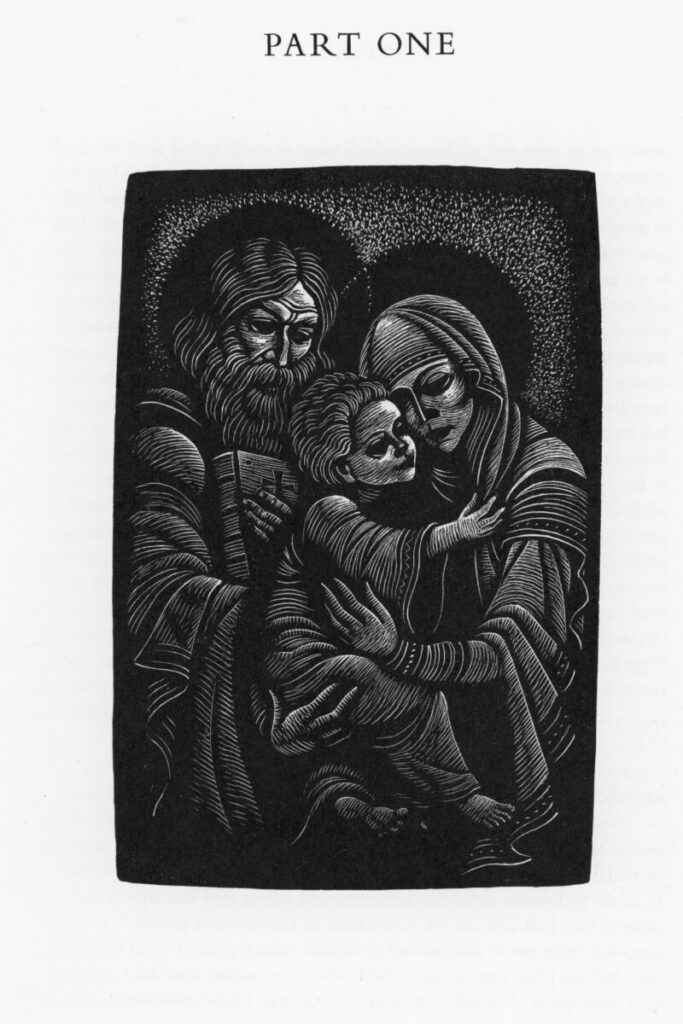
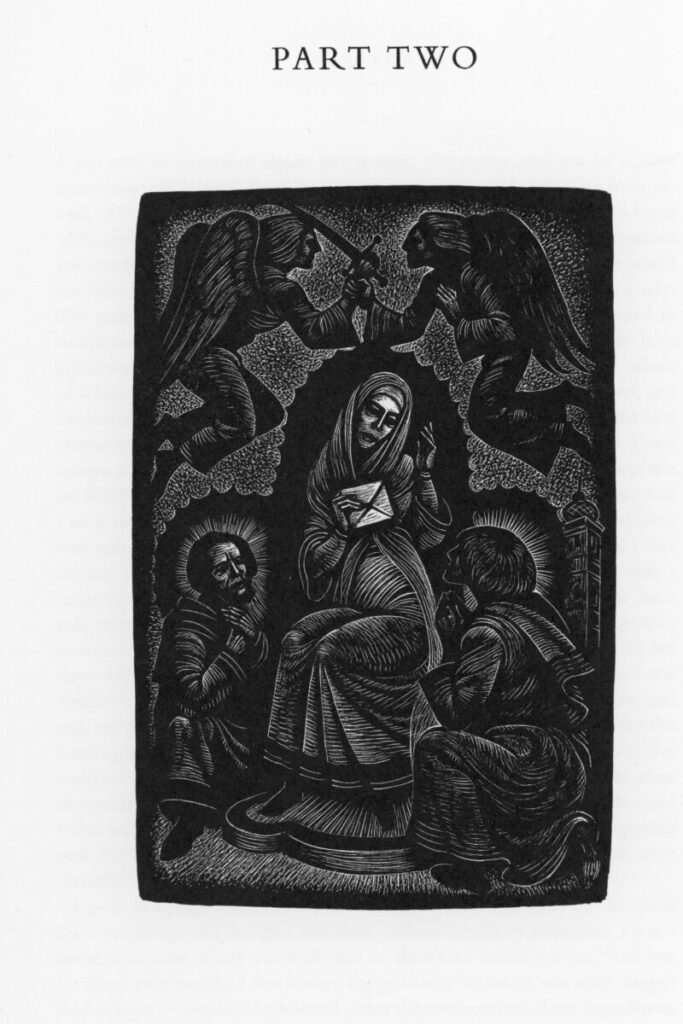
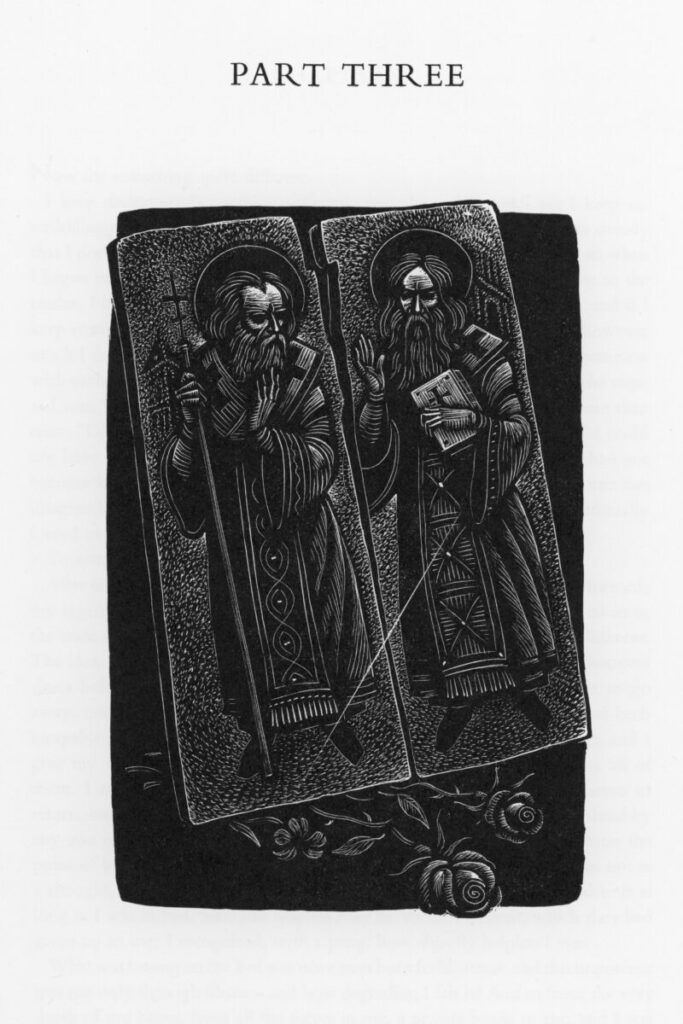
Each of the three parts has a frontispiece
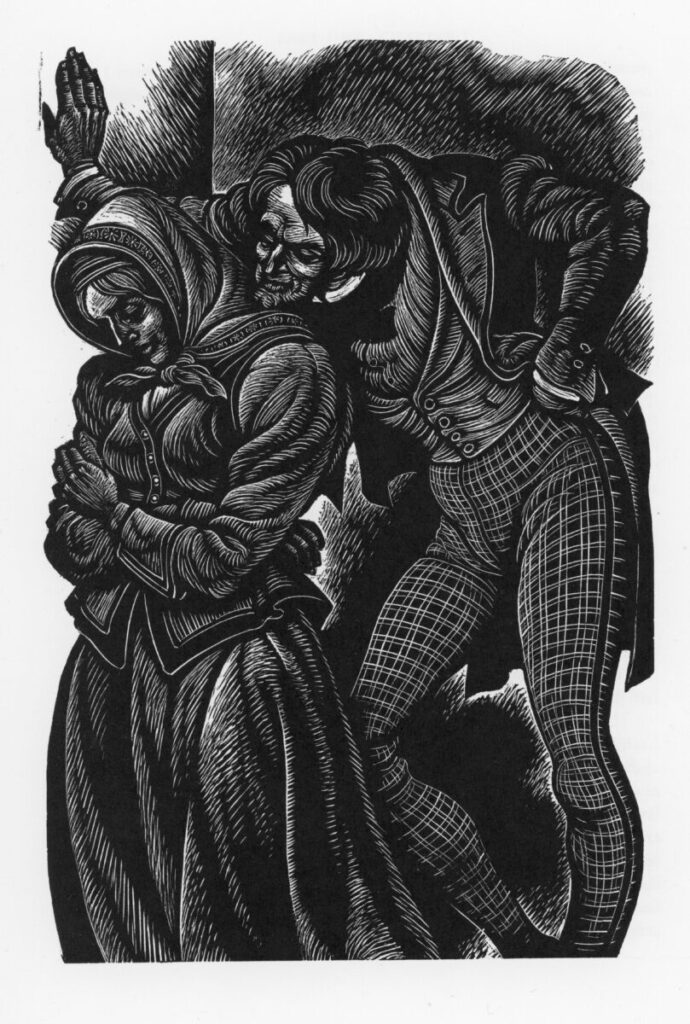
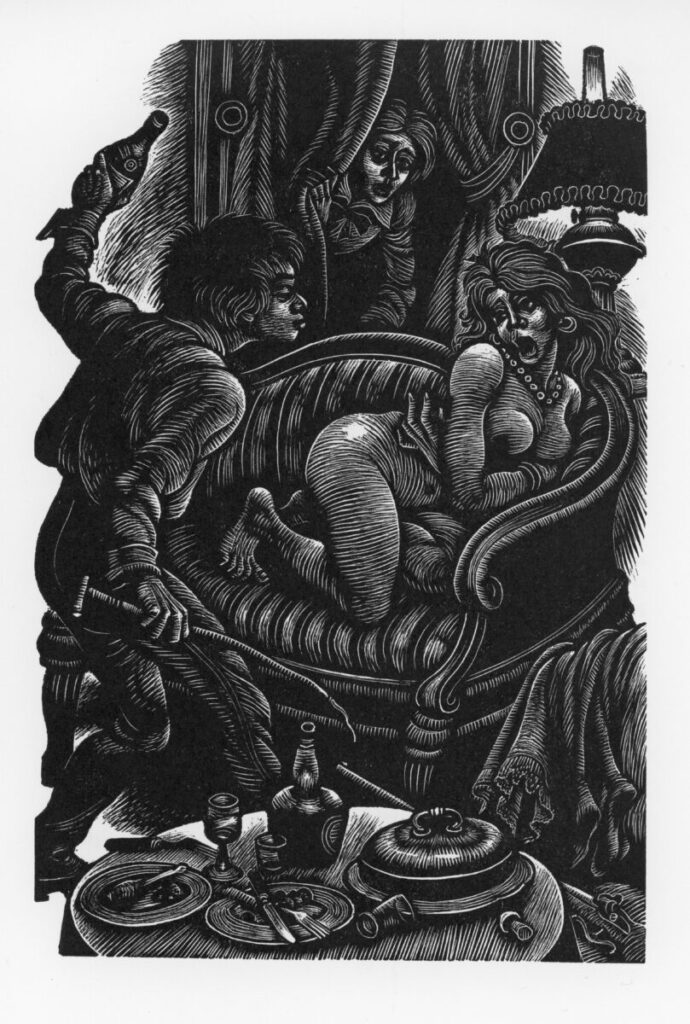
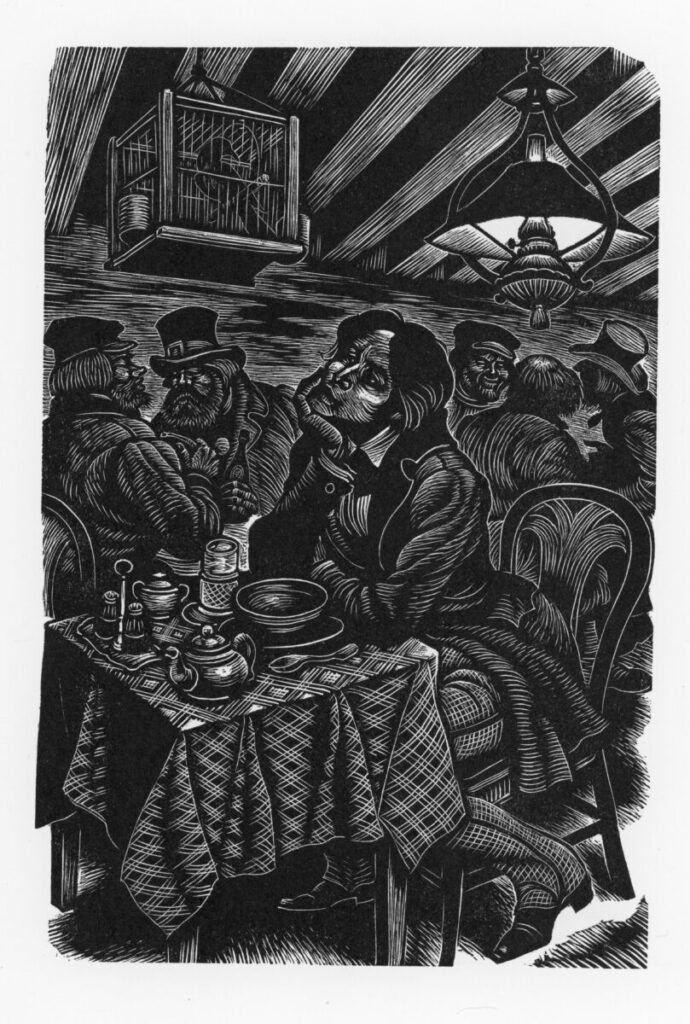
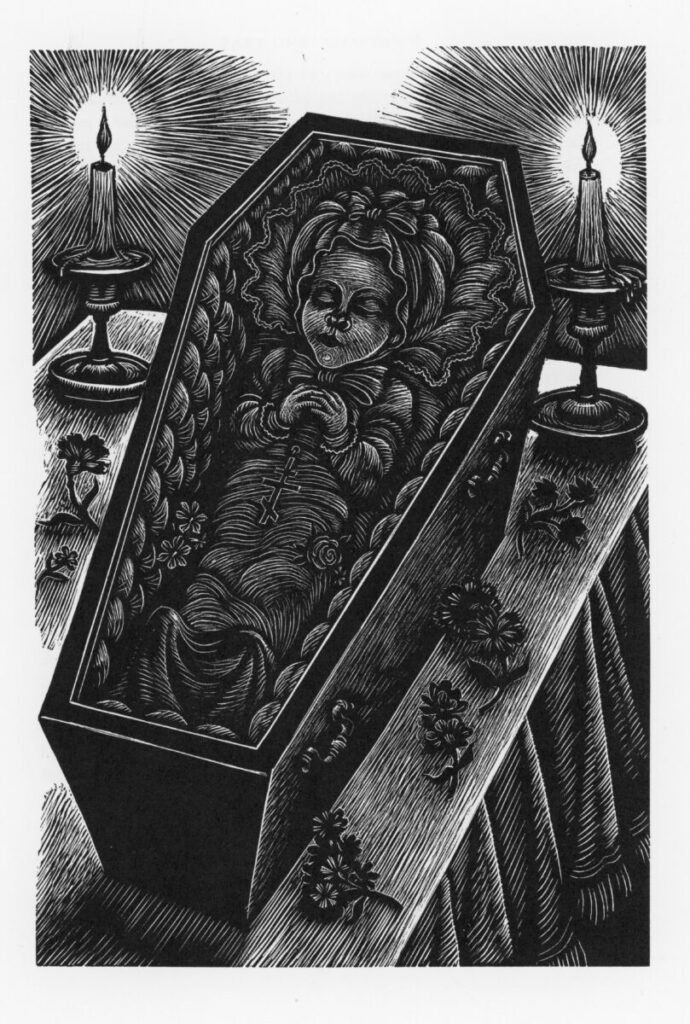

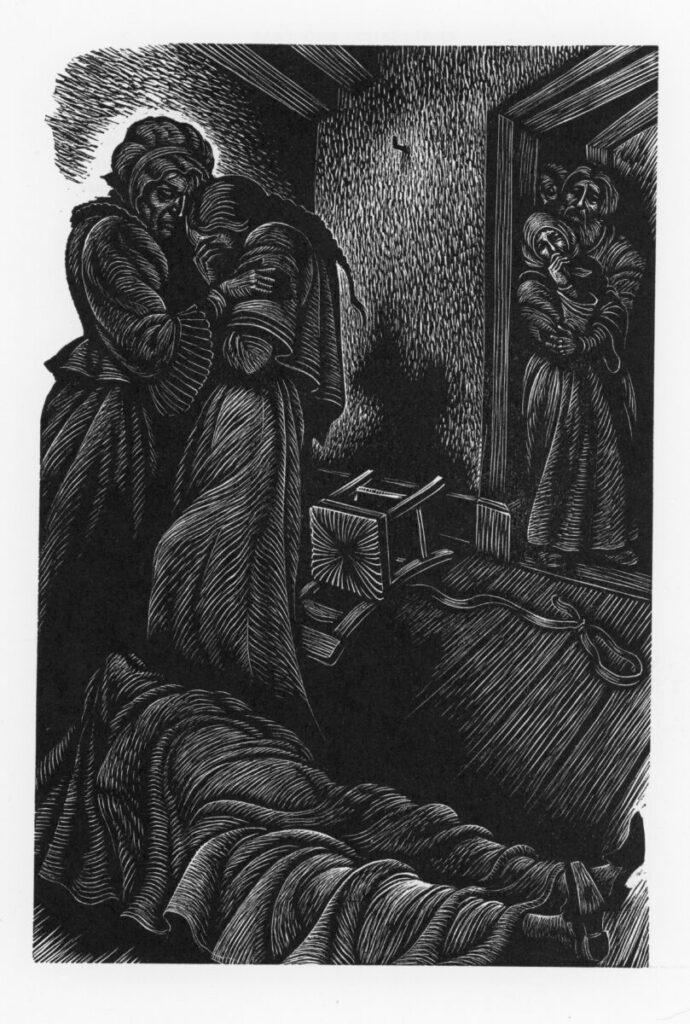
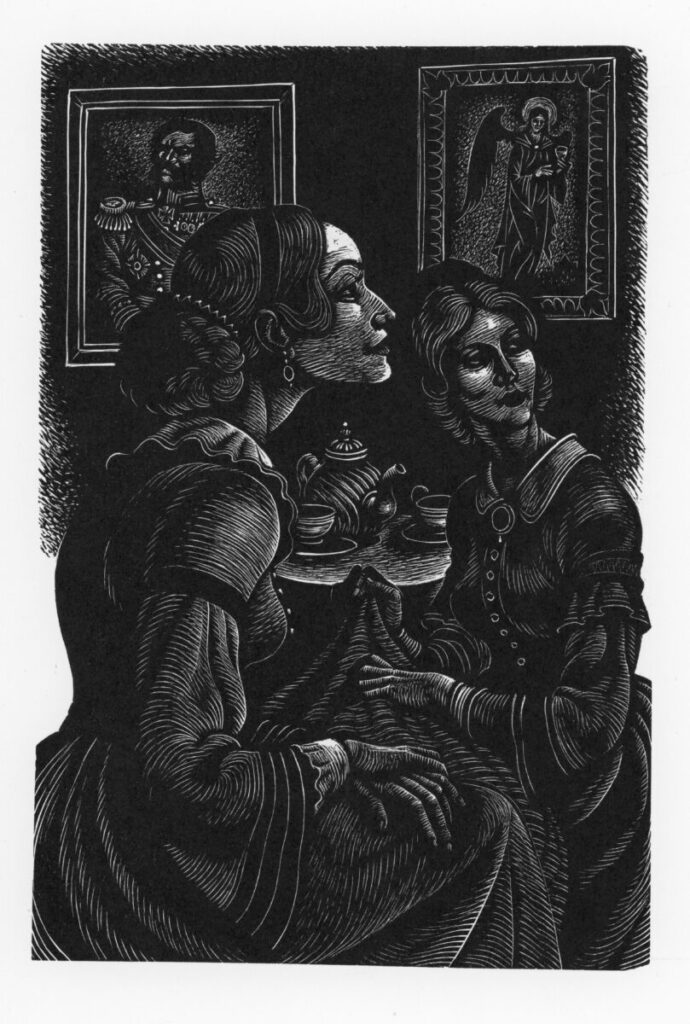
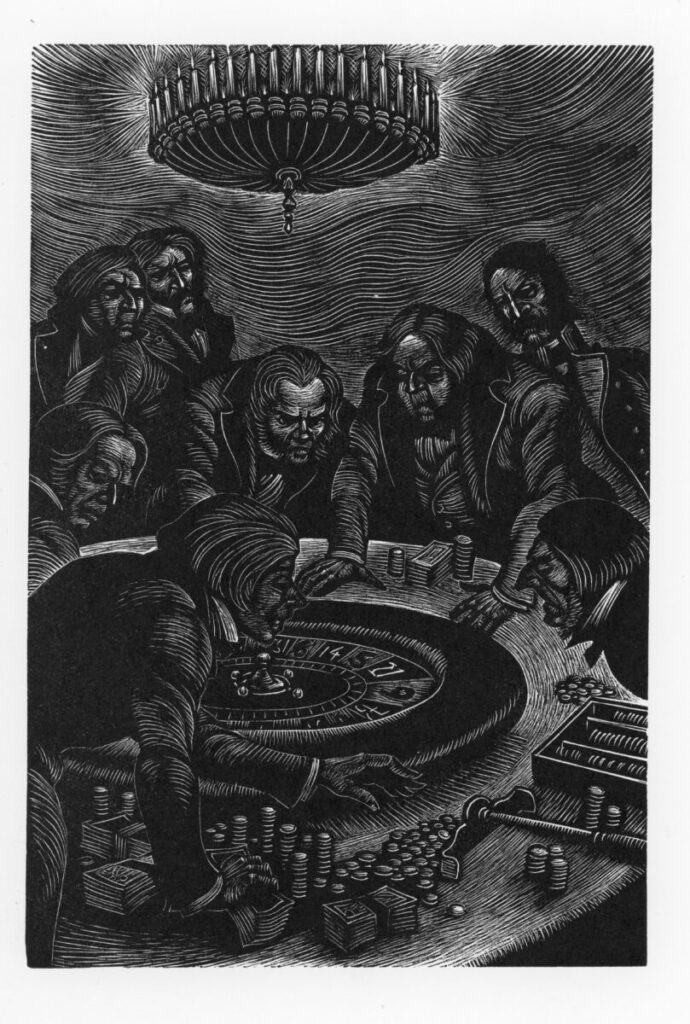
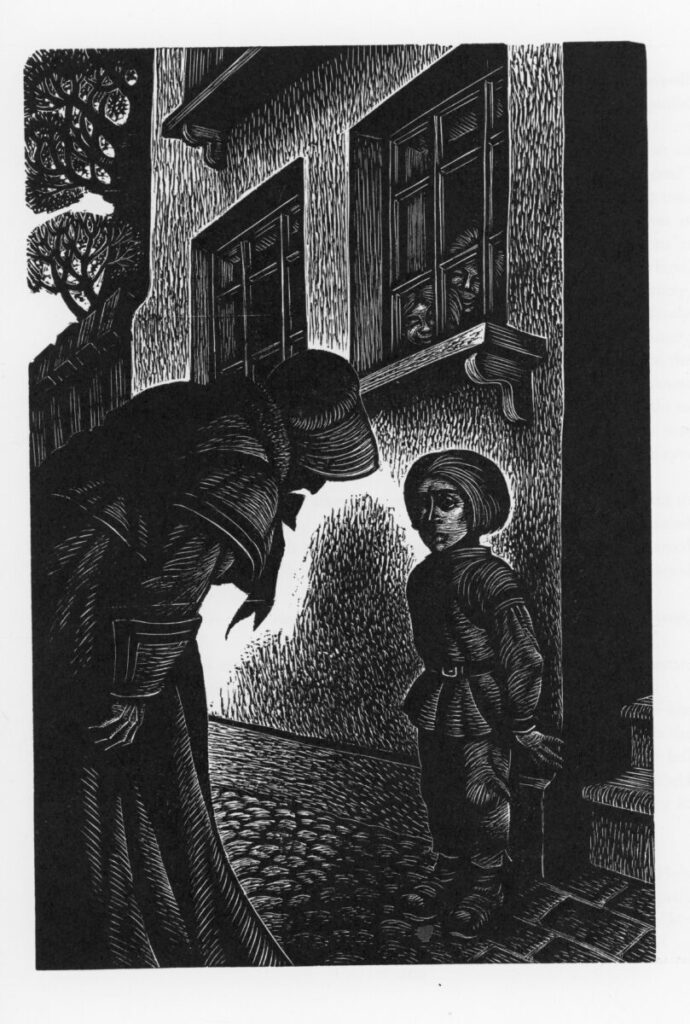

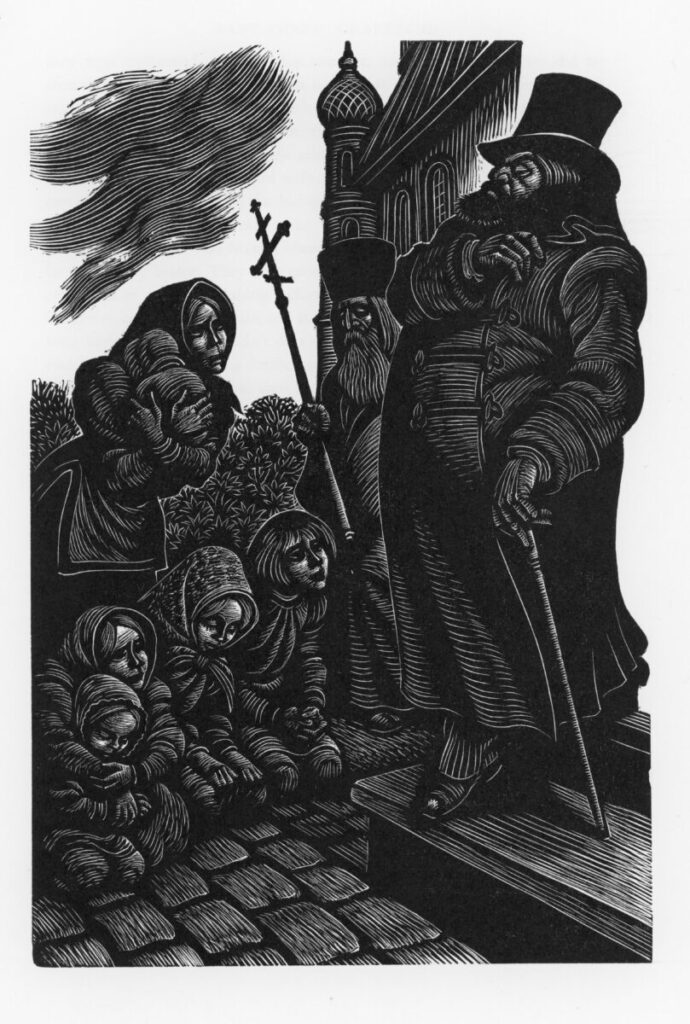
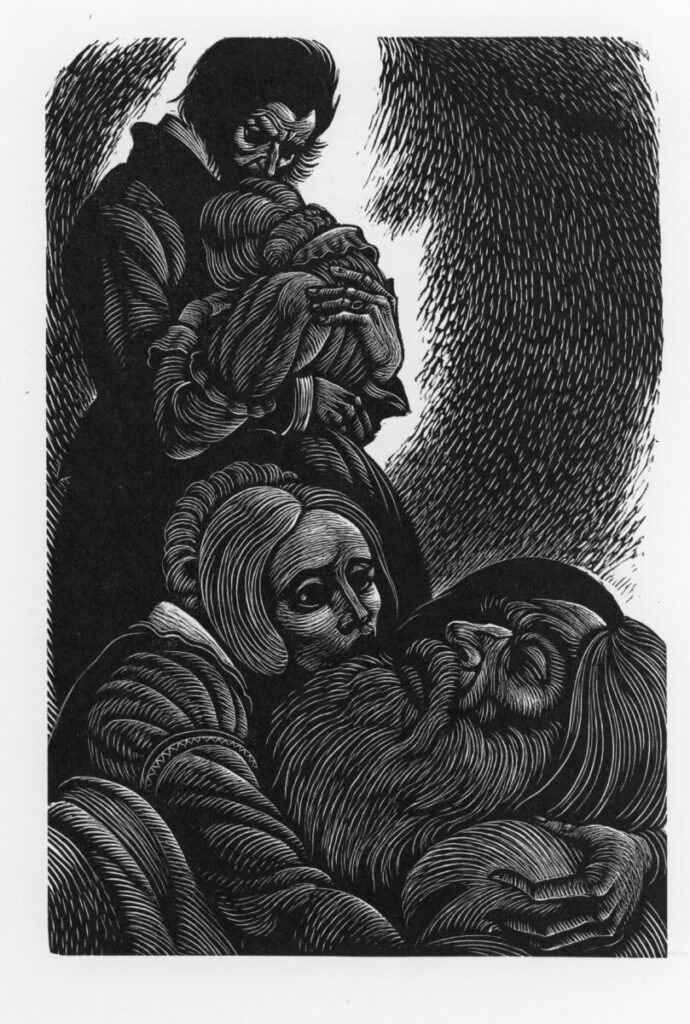
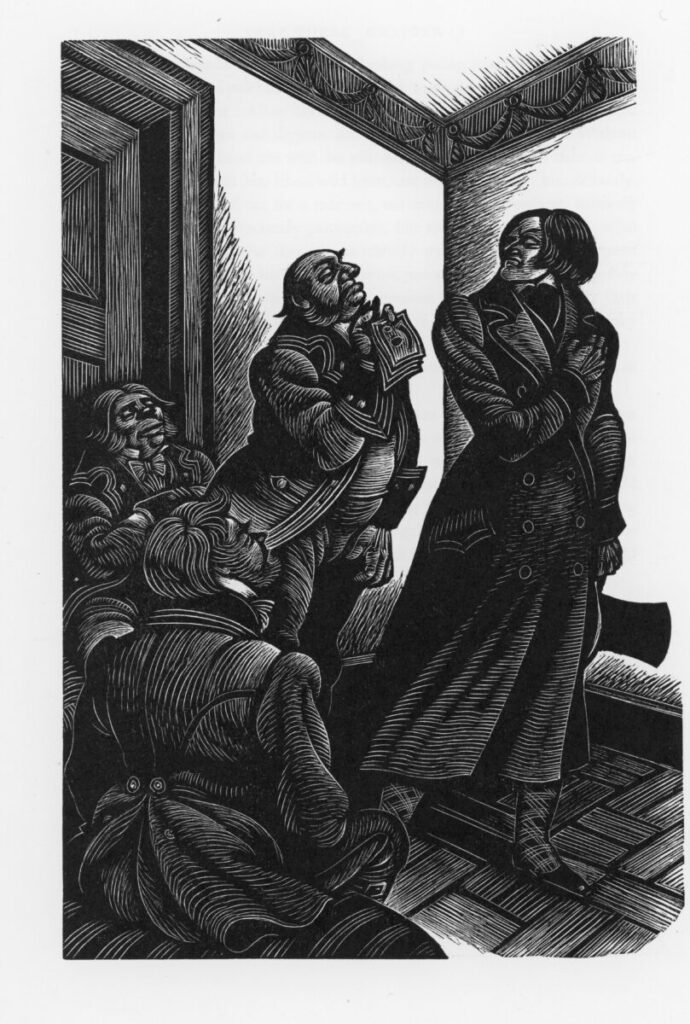
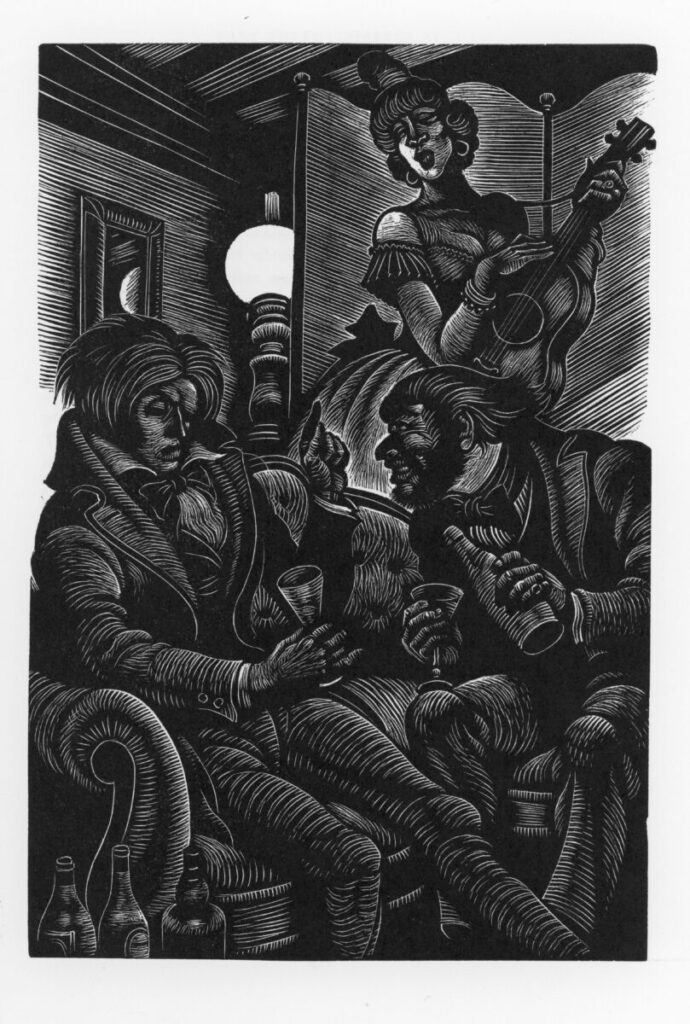
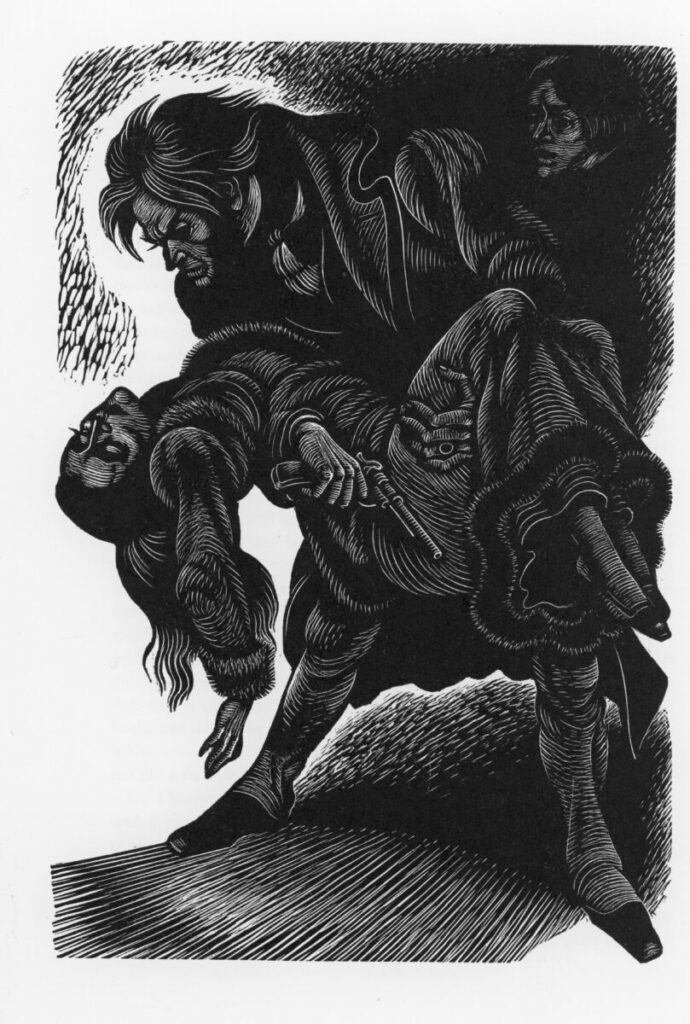
The titles of these full page woodcuts appear in the gallery.
Dillon returned home this morning and was able to join us for his favourite dinner of superlative bangers and creamy mash; firm carrots, cauliflower and broccoli, and meaty gravy with which Jackie drank Hoegaarden and I finished the Malbec.
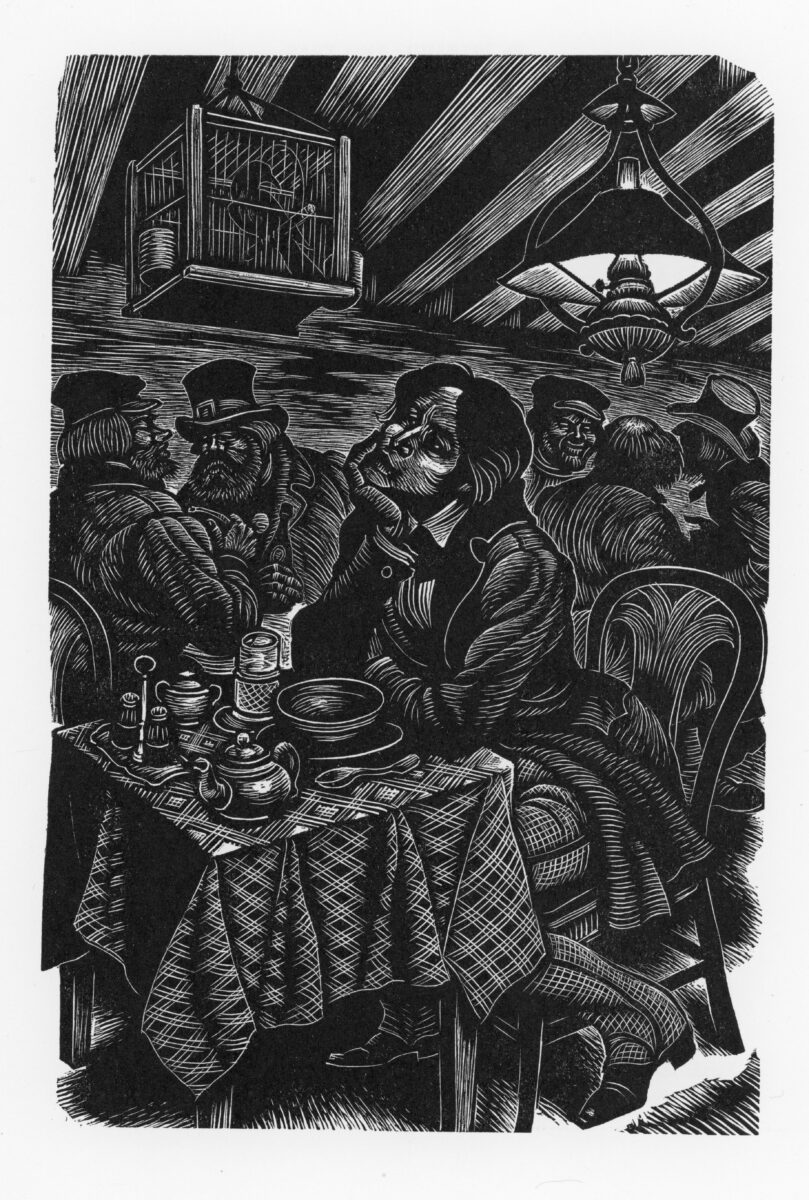
A fascinating read. Thank you.
I appreciate this, Joy
In Russia, this work was considered Dostoevsky’s worst, not only by some critics, but by the majority. It was considered immoral mainly because Arkady was an illegitimate son born by a serf woman and brought up on the cusp of freeing the serves. There were many youngsters in the same position at that time who tried to become acknowledged by their biological fathers in order to elevate their own station. Crossing societal boundaries was considered highly inappropriate, thus immoral.
Outstanding illustration, fully expressing the feeling of the text.
Thank you very much, Dolly, for this important addition
My pleasure, Derrick. Happy to contribute.
That is good
????
Hi Dolly, thanks for adding these comments. War and peace includes a situation of an illegitimate son inheriting a title despite general disapproval (Pierre )
True, and the way Pierre Bezukhov inherited the title was by a special Royal edict.
This review is a credit to your verbal elegance.
Thank you very much, Pat
Love, love those drawings.
Thank you very much, Chrissy
A well-written review and stunning illustrations.
It’s great Dillon is back.
Thank you very much, Merril
I love all of the details in the drawings, Derrick, so amazing! Bangers sound delicious! ????
Thanks very much, John
You are welcome.
Interesting that world (time period)
has just as many issues as we have today.
Indeed, Catherine. Thank you very much
If the illustrations are any indication, the story must be very compelling.
I do believe the illustrations have made it more so, Liz. Thank you very much
You’re welcome, Derrick.
Yes, stunning illustrations, and a detailed yet concise review of the book. Odd but sad how the same issues seem to cycle around.
Derrick, this is what is happening for me – From the reader I click Visit and all images are present. If I click the title/text instead of Visit I do not see the images. Just checked my phone notifications and the images show up! I cancelled email notifications so I cant comment, but I suspect the link will show the images.
Thanks very much, Sue
I have been reading of the American slaves who were fathered by their owner and although a descendant was still a slave.
Thanks a lot, John
The wood carvings/etching are truly magnificently detailed Derick, and the artists craftsmanship is amazing …
Thank you very much, Ivor
it doesn’t seem to have aged at all, as some of his other work. Thank you for bringing my attention to this work I was not aware of.
Much appreciated, Sylvie
YAY for Dillon getting back! And enjoy a fave meal!
Thank you for sharing your review with us…and those woodcut illustrations are so detailed and artistic!
(((HUGS)))
Thank you very much, Carolyn X
Hi Derrick, this is really interesting. I like the sculptures. I find Russian literature very heavy going ????
Thank you very much, Robbie. It is quite demanding
“superlative bangers and creamy mash”. It doesn’t get much better than that!
Thanks very much, John
Wonderful illustrations. You are a voracious reader.
When I was 7 my teacher said we should read 3 books a week. They were children’s books and I fall short of the target now, but I have read daily ever since. Thanks very much, Tootlepedal
Wonderful review, Derrick. My very limited “Russian reading” is Anna Karenina and Lolita. Russians do love to go on and on and on with their descriptions, don’t they?
Thanks very much, Dale. That’s probably why I like them
Haha! Must be a guy thing
The wood engraving illustrations are well done, and yes, the same issues plague humanity today. A good review, Derrick.
Thank you so much, Lavinia